Becoming a Better Project Manager
Do We Need to “Manage” a Project?
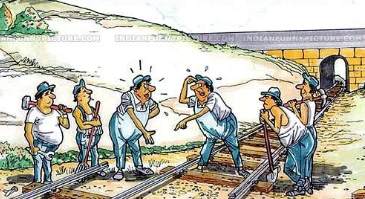
The illustration above speaks for itself. Do you notice the chaos in the picture? In the absence of proper project management, that’s what you get.
But a decent project management plan must factor in resource restrictions.
Without money, time, and resource constraints, every project would eventually reach completion. But that ideal world doesn’t exist because constraints are real.
Project Management
Project Management is initiating, planning, executing, controlling, and closing a temporary endeavor. The practice targets specific goals, predetermined success criteria, and defined periods.
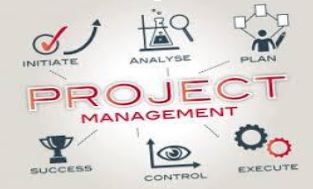
Here are the three project management steps you must follow:
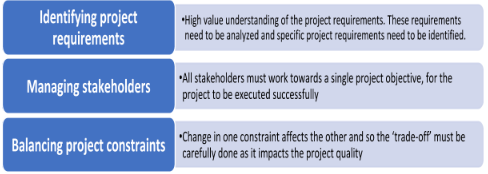
You may also define project management as the proper application and integration of various processes. And “proper application and integration” means executing these processes using standardized best practices.
Every project needs someone who’d be responsible for its success. This person handles the planning, organizing, leading, controlling, and closing of a project.
You probably know it.
The “someone” in this case is a project manager. A project manager is responsible and accountable for the success or failure of a project. This project manager works with a team to figure out the success requirements of a project. Without an expert project manager, a project is bound for chaos.

Responsibilities
A project manager’s responsibilities include all the items below and more.
1.) Understands a customer’s requests
2.) Keeps customers fully informed and updated on their project’s status
3.) Manages project constraints
4.) Manages stakeholders
5.) Identifies training requirements for the project
6.) Sets and tracks key performance indicators (KPIs)
7.) Takes responsibility for the project documentation
8.) Handles risk management
9.) Arranges regular feedback sessions
But project managers must take responsibility for daily tasks. Like the one identified below:
1.) Handle ad-hoc requests
2.) Manage conflicts
3.) Expect and respond to unplanned absenteeism
“Project Management is the discipline of organizing and managing resources so as to complete the project within defined project constraints.”
Skills
1.) S/he needs to be a great leader and a team player; more of “we” and less of “me.”
2.) You can resolve most project management issues if the project manager inspires leadership in his team. And if s/he is an excellent people manager.
3.) A manager who is also a hands-on worker improves the chances of project success.
4.) S/he can roll up her/his sleeves and transition from a manager to a worker if necessary.
5.) Successful project managers can be tough on team members where and when necessary. But they don’t resort to derogatory remarks.
6.) Ensures that the team always adheres to the project guidelines.
7.) Top managers understand the importance of excellent time management.
8.) Successful project managers follow the six Cs of communication and are great listeners
9.) Here are the six C’s of proper communication. Clear, Concise, Correct, Complete, Courteous, and Concrete.
10.)S/he is the project's face and s/he should be ready to take all the criticisms and praises as they come.
a) Shares the praises with the team.
b) He helps the team to understand criticisms. And he also motivates them and makes them work on the feedback.
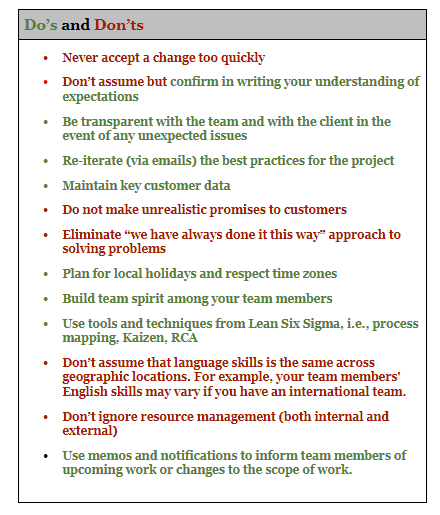
“Project Manager with ‘Project Management Professional’ certification will make them more striking job candidates for leadership positions.”
How to Choose Your Project Management Methodology
Your methodology will depend on your team, project-type, and project scope. There’s no such thing as a one-size-fits-all.
You’d guide the whole project based on your choice of project management methods. A project methodology informs your management actions from start to finish.
A project management methodology helps you standardize, structure, and organize work methods. The Project Management Institute (PMI) defines a methodology as
“a system of practices, techniques, procedures, and rules used by people who work in a discipline.”
We have an abundance of project management methodologies. But for our purpose, let’s narrow down to a few popular options and understand them in brief.
Agile
a.) It’s best suited for projects that are iterative and incremental
b.) Project requirements and solutions evolve. Thanks to the collaborative efforts of self-organizing, skilled teams, and their customers.
Best suits: Projects that need flexibility but laden with complexity or uncertainty. For instance, in a situation where a team is building a product or service for the first time.
Scrum
a.) Focuses on five values: commitment, courage, focus, openness, and respect
b.) What makes it different from Agile is how it works by using specific roles and events
Best suits: Projects with a team of fewer than seven persons. But the project needs a flexible approach to deliver a product or service.
“Project Managers who understand and respects cultural differences among team members and clients build a stronger rapport with their global audience of teams and customers”
Kanban
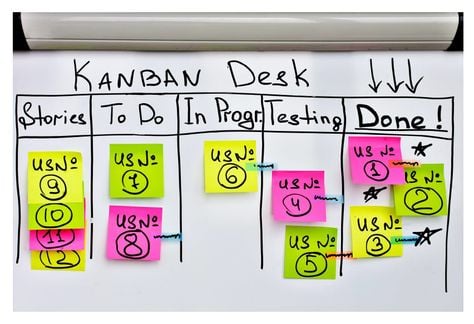
a.) Popular like Agile framework and like scrum
b.) Focuses on early releases with collaborative and self-managing teams
c.) Uses a Kanban board to represent the stages of development from the beginning to when the work is completed
The board’s basic structure is three columns named as
a.) To-Do,
b.) Doing, and
c.) Done
These are pretty self-explanatory. You may apply Kanban to any project that requires continuous improvement.
Best suited for: Like Scrum, Kanban fits for projects with smaller teams, who need a flexible approach to deliver a product or service. Kanban is also great for personal productivity purposes.
“Knowledge of Information security is an added advantage to have for any project manager as it earns the client’s confidence in the manager and project’s prospects”
Waterfall

a.) This is one of the more traditional project management methodologies
b.) It’s a linear, sequential design approach. Progress flows downwards in one direction, like a waterfall.
c.) This methodology stresses the importance of documentation
Best suited for: The waterfall project methodology is used for simple projects, due to its resistance to change.
Six Sigma
a.) A structured statistical methodology that is used to measure the quality of the service and performance
b.) Disciplined continuous improvement process. This process focuses on developing and delivering perfect products and services
c.) Process-centric
Best suits: Large companies and organizations. Especially organizations that want to improve quality and efficiency through a data-driven methodology.
“The project manager plays the essential role of “integrating” all the different aspects of project management process.”
Communication
A manager must communicate the right message to the correct recipient effectively. You could create and send bulk emails to segmented lists. This practice may be more effective for communication than sending messages to individuals.
This arrangement ensures that the work gets done. It puts less emphasis on whether the primary person is available to take the job or not. A backup person may assume the responsibility and complete the work to specification.
Standardization
Less effort completes more work. That's what you achieve by standardizing repetitive and frequent activities. For example, let’s say a client places similar requests many times a week or at other repeated intervals. A project manager can use standard handoff mails to reduce the work demand of the requests.
Project Tracking
Track a small project by communicating required timelines along with the intermediate activities. Also, set periodic reminders and alerts. This arrangement helps the project manager and team track completion at each stage.
Or you may track progress using excel worksheets or other spreadsheets. Tracking your project on spreadsheets helps your team update task completion at intervals.
The project manager can view the consolidated status of the project by accessing the spreadsheet.
Team Structure
A dedicated team must have a well-defined RAM (Responsibility Assignment Matrix). Having a defined RAM works well for programs with a lot of small project or sub-projects. Workflows run more smoothly, and you save more time.
Successful PM:
“Never runs away from the responsibility but at the same time puts her/his foot down when the client demands are inordinate. Acts as a friend, philosopher & guide for the team members. Also, a great motivator creates the second line of leaders in the team. Always leads from the front”
To summarise,
Project Managers need to be more like leaders who know how to coordinate their teams and clients well. They must inspire everyone to work towards shared goals and ensure that their teams are not directionless.
Click here to kickstart your Project Management Career